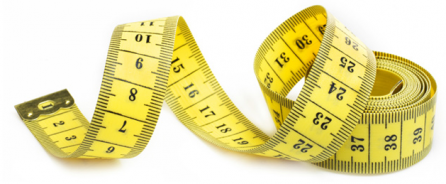
We often feel we need to assign value to something, to be sure we know if it has merit or worth. The field of evaluation is embedded in processes of measurement, be that qualitative or quantitative, or a combination of both methods. Social research, too, is similarly participating in the debate about what can––or should––be measured.
Is it really possible to measure culture? Cultural is intangible, after all. How can a value be placed on culture, the arts, the environment, health or wellbeing? In a previous blog post I discussed ways in which culture may be measured. You can read it here. How about other intangibles like risk, the value of information, effectiveness or efficiency? Can they be measured?
Esther Anatolitis, Director of Regional Arts Victoria recently grappled with the question of measurement of art in a recent interview by Richard Watts. She is conflicted about the notion of measuring art, as on one hand, measurement of the merit of art serves a purpose of continually monitoring and improving policies and programs. On the other hand, however, subjective artistic experience is difficult to measure, and, if not done appropriately, can impact on the role that arts plays. You can read her full interview on this topic here.
Douglas Hubbard, an American inventor of economic theory, writer and consultant, argues that anything can be measured (and he means anything!), and that by accepting this proposition, many problems in business and life in general can be solved. Hubbard’s thesis is that even if you don’t know the exact values to question that seem intangible, you still know something, and to articulate that something in a form of a value is better than not doing so at all. Hubbard explains this concept in a very accessible way in his book (one of my favourites) How to Measure Anything: Finding the Value of Intangible, which you can see here.
However, just because something can be measured doesn’t mean it necessarily should be measured. To measure something may not add value or worth to your problem, question or project. To decide whether something is worthy of measurement, it may be helpful to keep in mind these considerations, as identified by Australian social research expert, Keith Punch.
Measurement can be about making comparisons
Making comparisons is fundamental in research, and is a very effective way of making comparisons systematically, formalising and understanding differences. We can therefore consider measuring whenever we want to make systematic comparisons, and whenever the conditions apply. But if we do not need to make these comparisons then measurement may not be what we need to conduct.
Measurement involves the disentangling of concepts
To disentangle concepts and simplify them is to see complex phenomena more clearly. In some situations this is not desirable, such as when we need to see a holistic approach to something. But other times it is, such as when we may wish to understand the internal systems or working of a policy or program, in research or evaluation. It is important to consider whether it is necessary to disentangle concepts or not before measurement takes place.
Measurement necessarily involves imposing a numerical structure on data
To measure is to use researcher-imposed constructs, which, in qualitative research or evaluation studies, may not be appropriate. Yet, this bring us back to Hubbard’s thesis that anything can be measured, even intangible concepts, and assigning a value to them gives them context and meaning, which can help us understand them.
Conclusion
To measure or not to measure is a question that needs to be asked in response to a specific research or evaluation question. Importantly, what value does measurement add to a project, problem or question? If you have decided it is worth measuring something, only then will it be important to put the measurement effort into context and decide on the measurement approach and effort you should take in its measurement.
